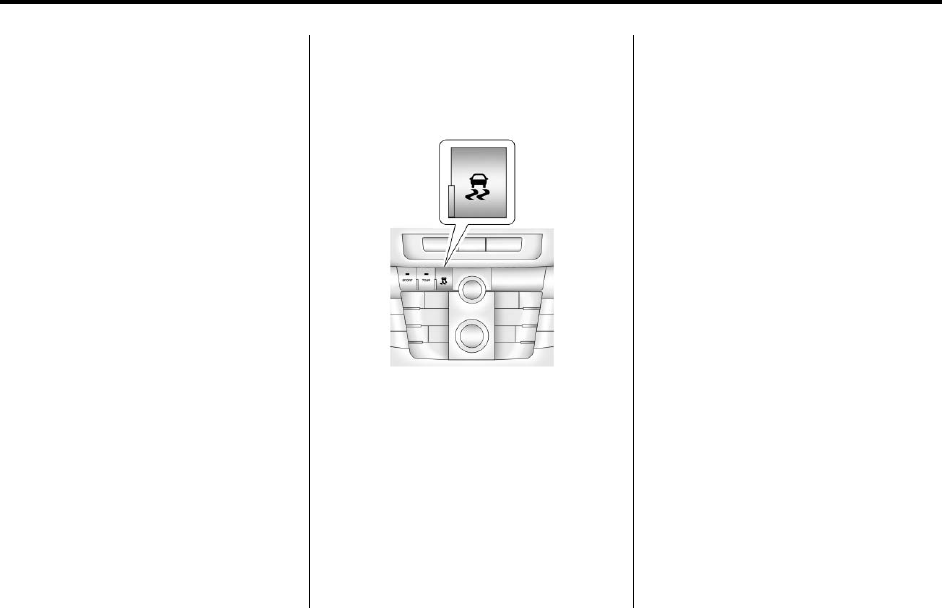
9-32 Driving and Operating
d flashes to indicate that the
traction control system is active.
See Electronic Stability Control
(ESC)/Traction Control System
(TCS) Indicator/Warning Light
on
page 5‑17
for more information.
If there is a problem detected with
TCS, Service Traction Control is
displayed on the Driver Information
Center (DIC). See Ride Control
System Messages
on page 5‑27
.
When this message is displayed
and
d comes on and stays on,
the vehicle is safe to drive but the
system is not operational. Driving
should be adjusted accordingly.
If
d comes on and stays on, reset
the system by:
1. Stopping the vehicle.
2. Turning the engine off and
waiting 15 seconds.
3. Starting the engine.
If
d still comes on and stays on,
the vehicle needs service.
Notice: Do not repeatedly brake
or accelerate heavily when TCS is
off. The vehicle's driveline could
be damaged.
TCS can be turned off by pressing
and releasing
d. When TCS is
turned off,
i comes on and the
system does not limit wheel slip.
Driving should be adjusted
accordingly. See Traction Off Light
on page 5‑16
for more information.
Press and release
d again to turn
the system back on.
It may be necessary to turn the
system off if the vehicle gets stuck
in sand, mud, or snow and rocking
the vehicle is required. See If the
Vehicle is Stuck
on page 9‑11
for
more information. See also Winter
Driving
on page 9‑9
for
information on using TCS when
driving in snowy or icy conditions.
Adding non‐GM accessories can
affect the vehicle's performance.
See Accessories and Modifications
on page 10‑3
for more information.


















